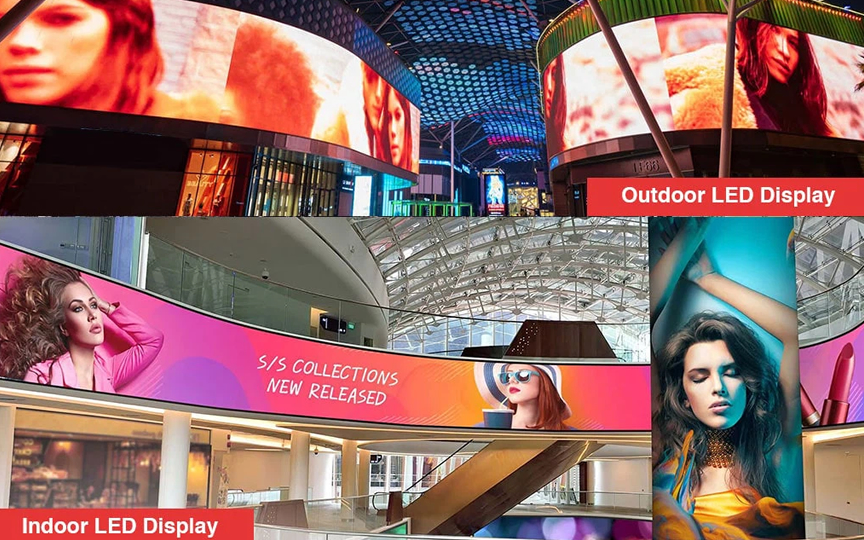LED displays have become a powerful visual tool for businesses, events, and public spaces. But before placing an order, one of the most important decisions is choosing between indoor and outdoor LED screens. They may look similar at first glance, but they are built for very different environments and use cases.
In this guide, we’ll walk you through the key differences so you can make the right choice.

1. Brightness Requirements
Indoor LED Displays
Designed for controlled lighting environments like shopping malls, conference rooms, or stages. Brightness typically ranges from 800 to 1500 nits.
Too much brightness indoors can be uncomfortable or even distracting.
Outdoor LED Displays
Built to compete with direct sunlight. They require high brightness—often above 5000 nits—to remain clearly visible in daylight conditions.
Conclusion: If your display will be exposed to natural light, outdoor brightness is a must.
2. Weather and Environment Protection
Indoor LED Displays
Do not need protection from rain, dust, or extreme temperatures. As a result, the structure is lighter and easier to install indoors.
Outdoor LED Displays
Must be waterproof, dustproof, and able to withstand wind, heat, cold, and UV radiation. Look for a high IP rating, such as IP65 or higher.
Conclusion: Outdoor displays are built to survive the elements—indoor ones are not.
3. Pixel Pitch and Viewing Distance
Indoor LED Displays
Typically have smaller pixel pitch (e.g., P1.5, P2.0, P2.5), offering higher resolution at closer viewing distances. Ideal for lobbies, stores, or meeting rooms.
Outdoor LED Displays
Use larger pixel pitch (e.g., P4, P6, P8) since viewers are usually farther away. Resolution is less critical than visibility and scale.
Conclusion: Choose based on how close your audience will be.
4. Installation and Structure
Indoor LED Displays
Often mounted on walls, ceilings, or custom stage frames. Lightweight design and ease of maintenance are important.
Outdoor LED Displays
Require stronger support structures—like steel frames or columns—to resist wind and weather. Installation usually takes longer and requires more planning.
Conclusion: Outdoor installations are more complex and require more preparation.
5. Cost Considerations
Outdoor LED displays are generally more expensive than indoor ones due to higher durability, weatherproof design, and higher brightness levels. However, the long-term ROI can be excellent for advertising and public messaging.
Conclusion: Don’t choose based on price alone—choose based on the intended environment and purpose.
Final Tips Before Buying
-
Clearly define where and how your LED display will be used.
-
Consider audience distance, sunlight exposure, and installation method.
-
Work with a trusted manufacturer like Topview Display to select the right product with proper IP rating, pixel pitch, and brightness.
Topview Display offers a full range of both indoor and outdoor LED display solutions. Whether you need a compact indoor screen or a large-scale outdoor billboard, our team can guide you through product selection, customization, and installation.

